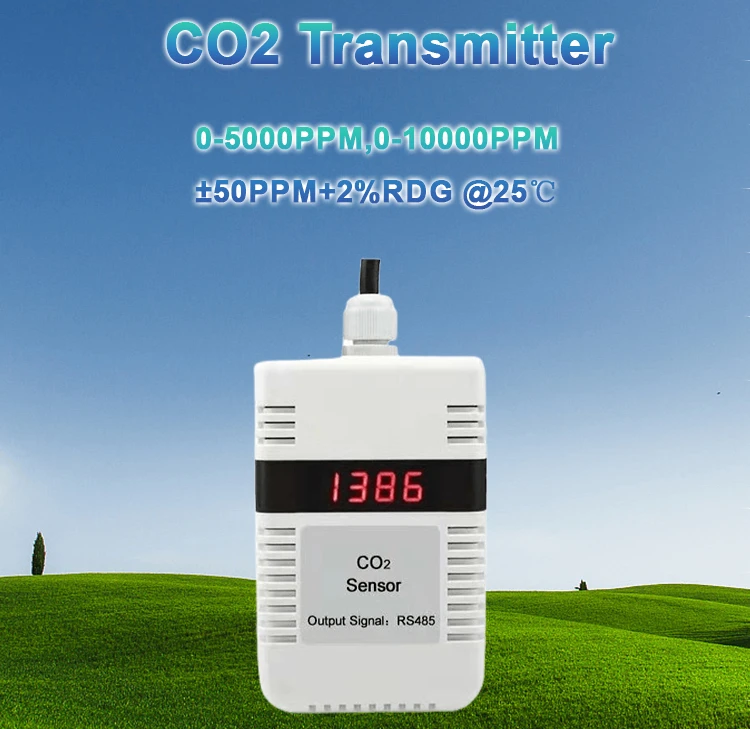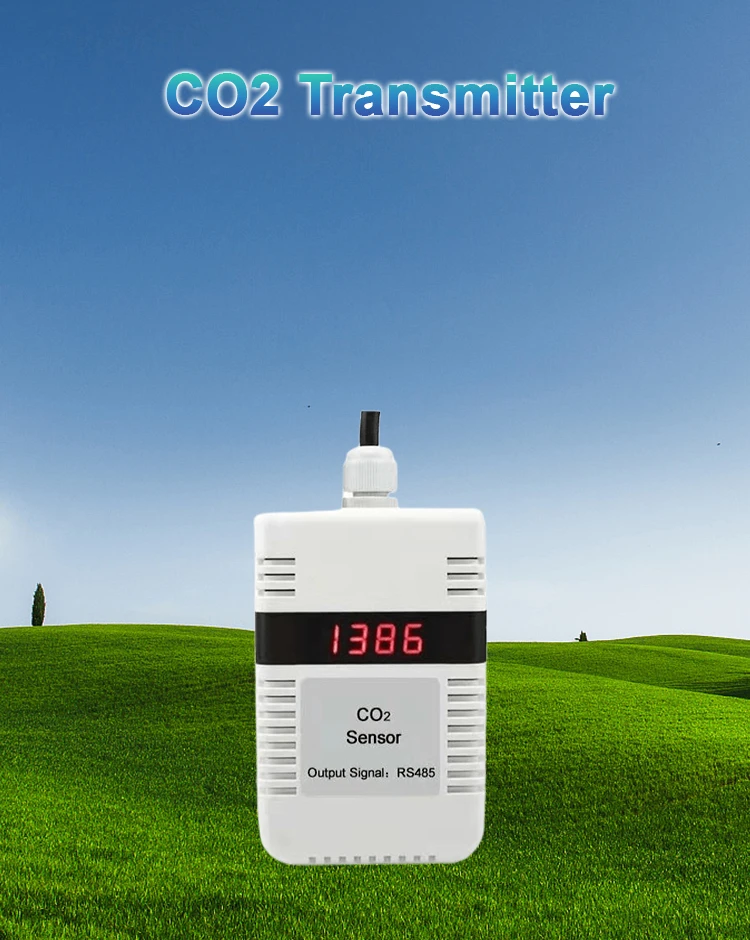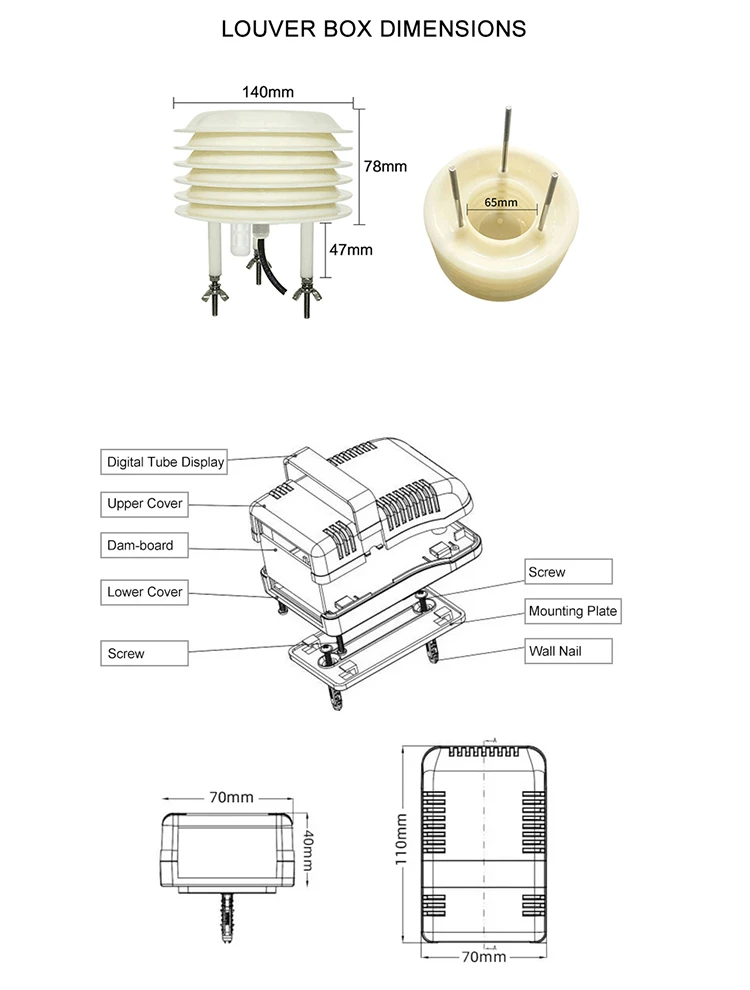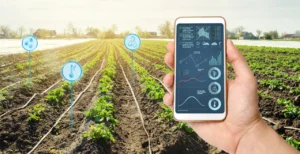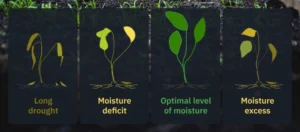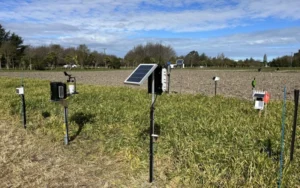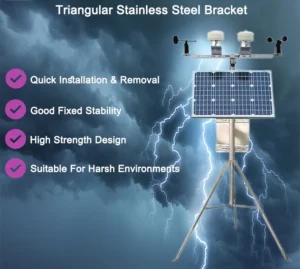What is a Carbon Dioxide Sensor?
**Understanding Carbon Dioxide Sensors**
A carbon dioxide sensor measures the amount of carbon dioxide (CO2) in the air. These sensors use special technology to provide accurate data on CO2 levels. This information is important for many fields. These include environmental monitoring, industrial processes, agriculture, healthcare, energy management, and scientific research.
**How CO2 Sensors Work**
Carbon dioxide sensors use different technologies. The most common type is non-dispersive infrared (NDIR) technology. Other types include electrochemical, semiconductor, and thermal conductivity sensors. Each type has its own principles and benefits for specific situations.
1. **Non-Dispersive Infrared (NDIR) Technology**
– *Operating Principle*: An NDIR sensor has an infrared light source, a gas sample chamber, a filter, and a detector. When air with CO2 enters the chamber, CO2 molecules absorb specific wavelengths of infrared light, usually around 4.26 μm. The detector measures the light that is left. The CO2 concentration is calculated based on the amount of light absorbed.
– *Advantages*: NDIR sensors are great for many uses. They are precise, stable, and selective. This makes them ideal for environmental monitoring and industrial control.
2. **Electrochemical Sensors**
– *Operating Principle*: These sensors work by using a chemical reaction between CO2 and an electrolyte inside the sensor. The electrical signal produced directly relates to the CO2 concentration.
– *Advantages*: They are cheap and easy to carry. This makes them great for mobile use or for people on a budget.
3. **Semiconductor Sensors**
– *Operating Principle*:Semiconductor sensors can sense changes in electrical resistance caused by different levels of CO2. The resistance of the semiconductor changes with the amount of CO2 in the air.
– *Advantages*: Quick response times make these sensors great for places where CO2 levels change quickly.
4. **Thermal Conductivity Sensors**
– *Operating Principle*: These sensors find CO2 by measuring how gases conduct heat. CO2 has a special thermal conductivity that is different from other gases. This helps us estimate how much CO2 is present based on this property.
– *Advantages*: Their simple structure and low cost make them good for certain uses.
**Applications and Significance of Carbon Dioxide Sensors**
1. **Environmental Monitoring**
– *Indoor Air Quality Control*: CO2 sensors are important for keeping indoor air safe. They check and control high CO2 levels that can harm health.
– *Air Quality Assessment*: Real-time data helps us check air quality and prevent air pollution.
2. **Industrial Applications**
– **Workplace Safety:**
In risky places like factories or mines, it is important to check CO2 levels.
This helps prevent suffocation.
It also keeps workers safe.
– *Production Monitoring*: Sensors measure gas levels during industrial processes. This helps keep operations stable and safe.
3. **Agriculture**
– *Greenhouse Cultivation*: Controlling CO2 levels helps crops grow better. This improves both the yield and quality.
– *Precision Agriculture*: Ongoing monitoring helps improve irrigation and fertilization methods on farms.
4. **Health and Safety**
– **Public Spaces**:
– It’s important to check the air quality indoors.
– This includes places like offices, schools, and hospitals.
– Monitoring helps prevent health issues caused by high CO2 levels.
5. **Energy Efficiency**
– *HVAC Systems*: Ventilation systems can change automatically based on CO2 levels. This helps save energy and keeps air quality good.
6. **Medical Applications**
– *Patient Care*: Devices such as ventilators and anesthesia monitors use CO2 sensors. These sensors track exhaled CO2 levels to ensure safe treatments.
7. **Transportation**
– *Emission Monitoring*: Sensors check vehicle emissions. This helps keep air quality good in cities and reduce harm to the environment.
8. **Scientific Research**
– *Climate Studies*: Atmospheric CO2 levels are key to understanding climate change. This makes sensors vital for global research.
applications of carbon dioxide sensors
1. Indoor environment applications:
– **Residential Use**: Check and control indoor air quality to support health and comfort.
– **Offices**: Make a comfortable and efficient space for people who work there.
– **Schools**: Create a good learning environment to help students focus and do better.
– **Hospitals**: Provide good air quality to protect the health of patients.
2. Agricultural applications:
– **Greenhouses**: Improve conditions for plants and increase crop production.
– **Agricultural Facilities**: Check CO2 levels in greenhouses to create the best gas conditions for crop growth.
3. Industrial applications:
– **Chemical Plants**: Monitor CO2 levels during production to keep everyone safe.
– **Mines**: Keep workers safe by ensuring good air quality and reducing the risk of asphyxiation.
– **Underground Parking Areas**: Check air quality to keep it safe for vehicles and people.
4. Transportation-related applications:
– Check vehicle emissions by watching CO2 levels. This helps us evaluate air quality effectively.
5. Smart home integration:
– CO2 sensors in smart systems help adjust indoor environments automatically. This improves quality of life and saves energy.
6. Environmental research initiatives:
– Carry out field studies and gather data on CO2 levels in the atmosphere. This will help climate change research.
Installation guide for CO2 sensors
Installing a carbon dioxide sensor involves several key steps, which may vary depending on the model and manufacturer guidelines. The following general instructions should serve as a helpful framework:
1. **Choose the installation location**:
– **Representativeness**: Place the sensor in an area that reflects the average CO2 levels of the monitored zone.
– **Avoid Interference**: Keep the sensor out of direct sunlight, wind, rain, and heat sources.
– **Distance from CO2 Sources**: Keep it away from places that release CO2, like vents or burning equipment. This helps get accurate readings.
– **Indoor Height**: In indoor areas, place the sensor at the activity zone level. This is usually 1.5–2 meters above the ground.
2. **Prepare necessary tools and materials**:
– **Tools**: Gather tools such as drills, screwdrivers, and wire cutters in advance.
– **Accessories**: Get screws, brackets, tape, or anchor bolts ready before you start the installation.
3. **Install the sensor**:
– **Wall-mounted Style**: First, mark where to mount the sensor. Then, drill the needed holes. Finally, secure screws or anchor bolts to keep the sensor stable on the wall and level.
– **Hanging Style**: Use cables or a boom to hang the sensor at the right height.
4. **Set up power and signal connections**:
– **Power Supply**: Maintain a stable power connection per the sensor’s specifications (e.g., DC 12V–24V).
– **Signal Connectivity**: If remote data transmission is available, connect the right signaling lines, like RS485 or 4–20mA output.
– **Check Connections**: Make sure all cables are installed correctly and securely to prevent damage.
5. **Calibrate the sensor (if necessary)**:
Use the calibration tool or follow the procedure from the manufacturer’s guidelines. This will help ensure accurate readings.
6. **Test the sensor**:
– Run tests after installation to check if everything works correctly.
– Check that the signal outputs are correct and the readings are within expected limits.
7. **Finalize installation**:
– **Organize Wires**: Neatly arrange cables to keep them safe and prevent any tripping hazards.
– **Provide Protection**: If needed, install shields to protect the sensor.
8. **Documentation and records**:
– Record the installation date, locati0n, and any calibration data for future reference.
Summary
Carbon dioxide sensors are important tools for monitoring the environment. They have many uses and provide great benefits to society. Their ability to monitor CO2 levels improves our quality of life. These sensors help protect the environment, boost productivity, and support scientific progress.
As science and technology continue to progress, these sensors will evolve further, providing greater convenience and safeguards in both daily life and professional activities.
